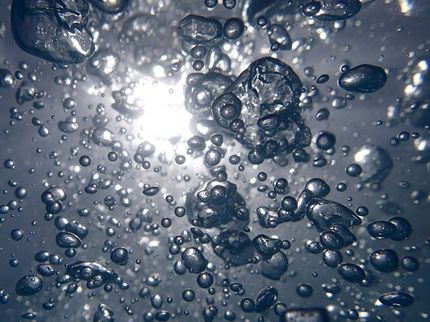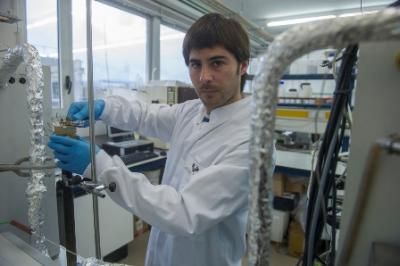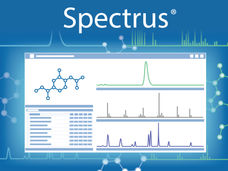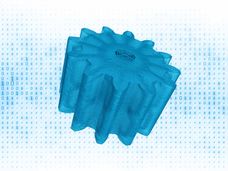Weird water: Discovery challenges long-held beliefs about water's special properties
Finding shows water-like behavior by spherical particles
Beyond its role as the elixir of all life, water is a very unusual substance: Scientists have long marveled over counter-intuitive properties that set water apart from other solids and liquids commonly found in nature. The simple fact that water expands when it freezes - is just the beginning of a long list of special characteristics. That is why chemical engineer Pablo Debenedetti and collaborators at three other institutions were surprised to find a highly simplified model molecule that behaves in much the same way as water, a discovery that upends long-held beliefs about what makes water so special.
"The conventional wisdom is that water is unique," said Debenedetti, the Class of 1950 Professor in Engineering and Applied Science. "And here we have a very simple model that displays behaviors that are very hard to get in anything but water. It forces you to rethink what is unique about water."
While their water imitator is hypothetical - it was created with computer software that is commonly used for simulating interactions between molecules - the researchers' discovery may ultimately have implications for industrial or pharmaceutical research. "I would be very interested to see if experimentalists could create colloids that exhibit the water-like properties we observed in our simulations," Debenedetti said. Such laboratory creations might be useful in controlling the self-assembly of complex biomolecules or detergents and other surfactants. .
More fundamentally, the research raises questions about why oil and water don't mix, because the simulated molecule repels oil as water does, but without the delicate interactions between hydrogen and oxygen that are thought to give water much of its special behavior.
The discovery builds on an earlier advance by the same researchers. It had previously been shown that simple molecules can show some water-like features. In 2006, the collaborators published a paper showing that they could induce water-like peculiarities by adjusting the distance at which pairs of particles start to repel each other. Like water, their simulated substance expanded when cooled and became more slippery when pressurized. That finding led them to investigate more closely. They decided to look at how their simulated molecule acts as a solvent - that is, how it behaves when other materials are dissolved into it -- because water's behavior as a solvent is also unique.
In their current paper, they simulated the introduction of oily materials into their imitator and showed that it had the same oil-water repulsion as real water across a range of temperatures. They also simulated dissolving oily polymers into their substance and, again, found water-like behavior. In particular, the polymers swelled not only when the "water" was heated, but also when it was super-cooled, which is one defining characteristic of real water. Proteins with oily interiors also behave in this way.
In real water, these special behaviors are thought to arise from water's structure - two hydrogen atoms attached to an oxygen atom. The arrangement of electrical charges causes water molecules to twist and stick to each other in complex ways.
To create their simulation, the researchers ignored these complexities. They specified just two properties: the distance at which two converging particles start to repel each other and the distance at which they actually collide like billiard balls. Their particles could be made of anything -- plastic beads, for example -- and so long as the ratio between these two distances was correct (7:4), then they would display many of the same characteristics as water.
"This model is so simple it is almost a caricature," Debenedetti said. "And yet it has these very special properties. To show that you can have oil-water repulsion without hydrogen bonds is quite interesting." Debenedetti noted that their particles differ from water in key aspects. When it freezes, for example, the crystals do not look anything like ice. For that reason, the research should not be viewed as leading toward a "water substitute." As a next step, Debenedetti said he would like to see if experimentalists could create particles that have the same simple specifications as their model and see if their behavior matches the computer simulation.
The researchers published their findings in the Proceedings of the National Academy of Sciences. The team also included lead author Sergey V. Buldyrev of Yeshiva University, Pradeep Kumar and H. Eugene Stanley of Boston University, and Peter J. Rossky of the University of Texas. The research was funded by the National Science Foundation through a grant shared by Debenedetti, Rossky and Stanley.

































































